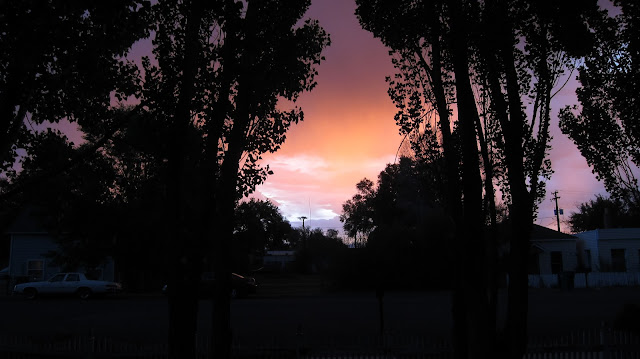Being the second part of a parcel of artless happysnaps captured while on the road, and reconciling myself to my relocation far from people and things I know at a time when I really need to be finishing this last book in my zombie action series. Here’s Part 1, in case you missed it.
My first mistake was not getting on the road until a quarter past nine. It’s a three hour drive at legal speeds from Monte Vista to Colorado Springs, and an earlier approach would have allowed for more time to visit with my children and others before making the three hour trip back.
My second mistake was perhaps even more egregious, given the time I lost to the first mistake. For I had taken the US 285 northbound route out of Monte Vista to exit the San Luis Valley via Poncha Pass. What I gained in a mindlessly pleasant drive through a drama-free pass would be worn away by the twists and turns of Bighorn Sheep Canyon between Salida and Cañon City.
 |
| Those grassy slopes on the right will soon turn into vertical walls of rock. A river will rise to the left, the road and rock forced into following its every twist and turn. |
 |
| Having been on the road non-stop for two hours I pulled over for fuel and a stretch in Cotopaxi, roughly midway between Salida and Cañon City. |
 |
| Looking eastward along the southern bank of the Arkansas River. |
 |
| Looking westward. |
 |
| Looking eastward down US 50 as I had a rare moment to cross without oncoming traffic on this critical east-wast trans-Colorado route. |
 |
| Westward down US 50. A car or truck could emerge any second, so I’m walking briskly. |
I kept telling myself I needed these views of the river. It was a fine morning for such a thing. But, again, I had left late. The weather wouldn’t hold long, either. Especially in Colorado Springs, which has been getting hammered by thunderstorms on a daily basis throughout the summer.













































